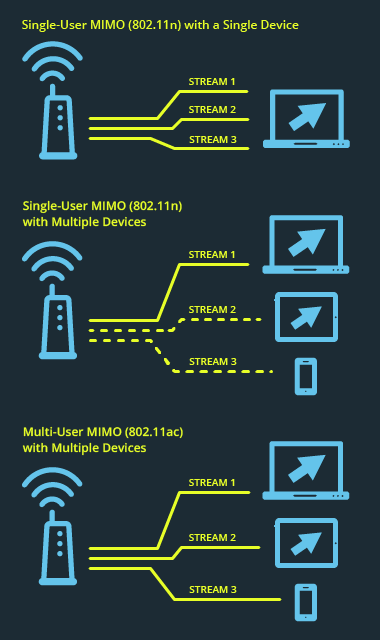In 2012, 1.5 billion Wi-Fi enabled devices were shipped to consumers across the globe. Everything from baby monitors to cameras to TVs and tablets were sold and are now voraciously feeding off of the wireless broadband in our homes, cafes, and even in our public parks. It’s practically ubiquitous now, but the seemingly magical technology that enables Wi-Fi is barely fifteen years old. When it was first deployed, wireless Local Area Network (LAN) systems were designed to serve a limited number of business applications under controlled environments. Picture a storage facility floor where employees check inventory with a wireless scanner. Today, wireless LANs fuel everything from the biggest billion-dollar businesses to your iPhone.
But people are using Wi-Fi on so many devices and for such data-heavy applications that the frequency utilized to transmit Wi-Fi is becoming saturated. It’s struggling to keep up with demand. In order to ensure a future with widespread access to both public and private Wi-Fi networks, something needs to be done. The current standard, 802.11n operating on the 2.4 GHz band, is capable of a theoretical maximum 300 – 450 Mbps per transmission point. This may seem pretty fast, but looking towards the future, it’s not going to be enough.
That’s where 802.11ac comes in. It’s capable of 1Gbps and it operates on the 5 GHz band, which means it can handle more users, more devices, bigger apps, and pull more of the burden off of cellular networks. Even better, many old devices will work on the new transmission standard (though receive no new benefit) and similarly, new devices will still work on old transmissions, so no need to worry that you’ll need all-new stuff. But even more exciting than new super-speed capabilities is the ability of 802.11ac to support multiple devices in open spaces. The older 802.11n was capable of four spatial streams while the new 802.11ac is capable of eight. This means that if 10 people are using 30Mbps on a public 802.11n Wi-Fi system, 20 could use the same amount on the new 802.11ac system, even if the maximum speed of the new system was the same as the old one. This works because of 802.11ac’s multiple-user multiple-input multiple-output capabilities (thankfully abbreviated as Multi-User MIMO). The old system only supported a single-user MIMO per access point, which could only offer full benefit to one device at a time. The new smarter system allows an equal amount of bandwidth to be assigned to multiple users simultaneously.
The graphic on the left shows how Single-User MIMO has to switch "attention" between multiple devices in order to deliver a connection, but Multi-User MIMO can simultaneously connect. What this all means is that 802.11ac is perfect for outdoor public Wi-Fi applications where many people are accessing the network on a variety of devices. This is particularly exciting for cable because of the already 150,000+ public Wi-Fi hotspots we’ve installed across the country. They’re available for no extra charge to cable broadband customers and while they’re revolutionizing how broadband is accessed outside the home, they’re also testing the limits of what the old 802.11n can do – especially in densely populated areas like New York City and Washington, DC.
In order to keep up with demand, we need to adopt the new 802.11ac standard. Unfortunately, establishing 802.11ac as the new standard isn’t as easy as installing new hardware. It’s really about more access to the 5GHz band that allows 802.11ac to work to its full potential. This is why it’s imperative that the FCC remove existing encumbrances on the 5 GHz band and freely allow businesses to take advantage of next generation Wi-Fi. As a country, we have the opportunity to establish ourselves as a global leader in public Wi-Fi availability, speed, and scale through 802.11ac and the 5 GHz band. The possibilities are practically endless when everyone has access to more unlicensed spectrum. 802.11ac is most certainly coming. We need to make sure we’re ready when it does.
